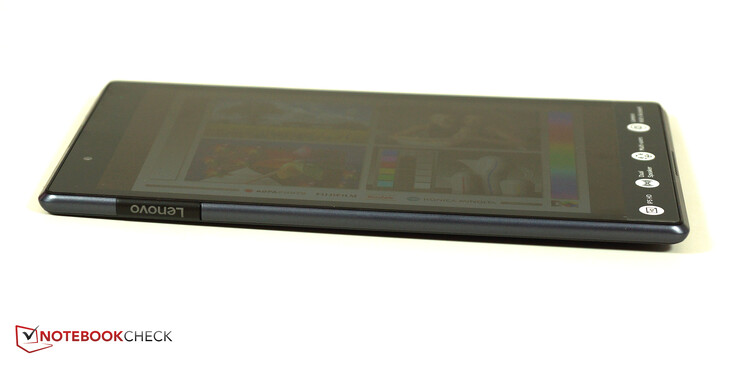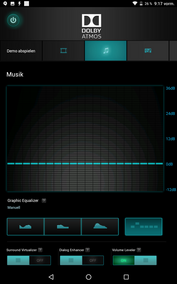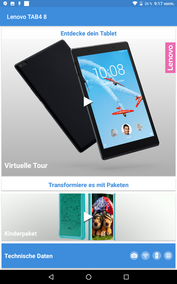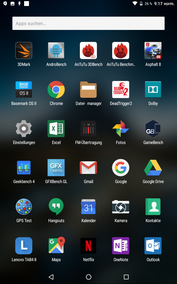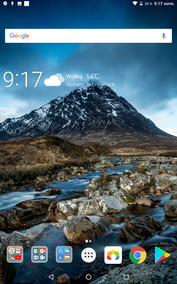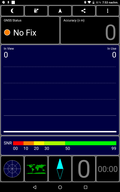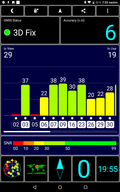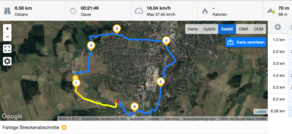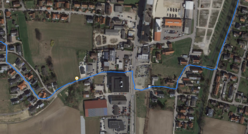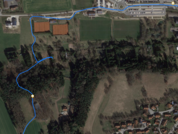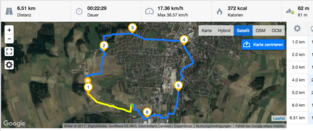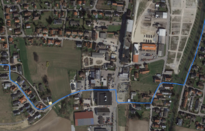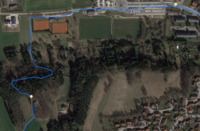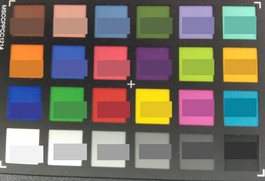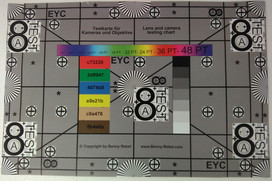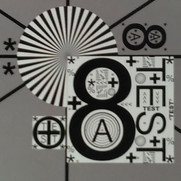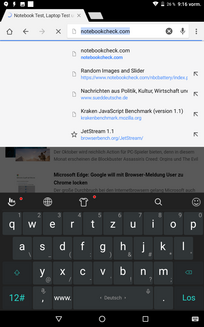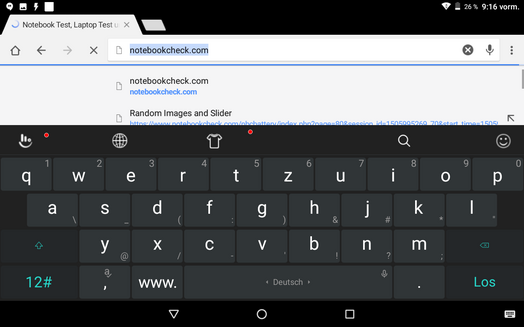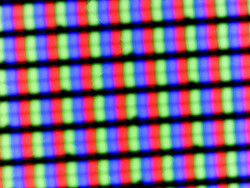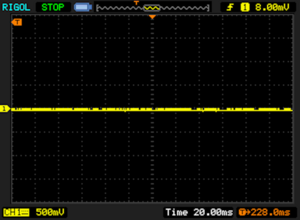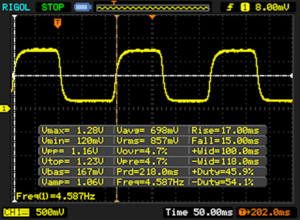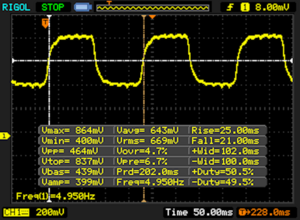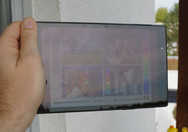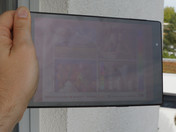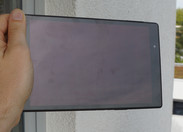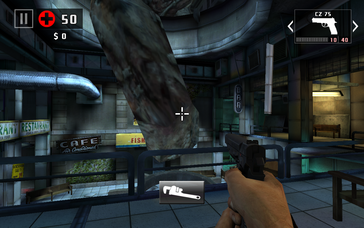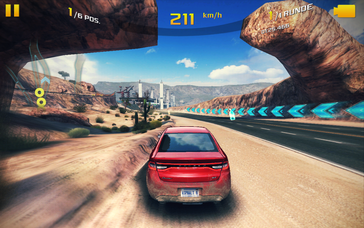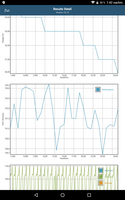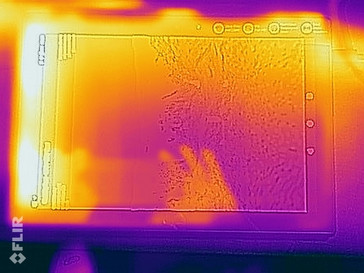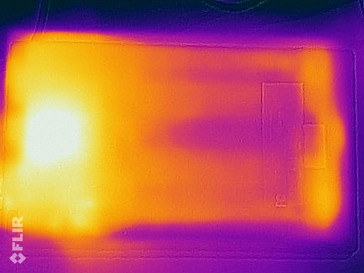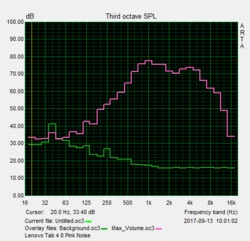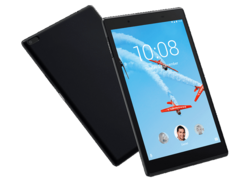Lenovo Tab 4 8 Tablet Review
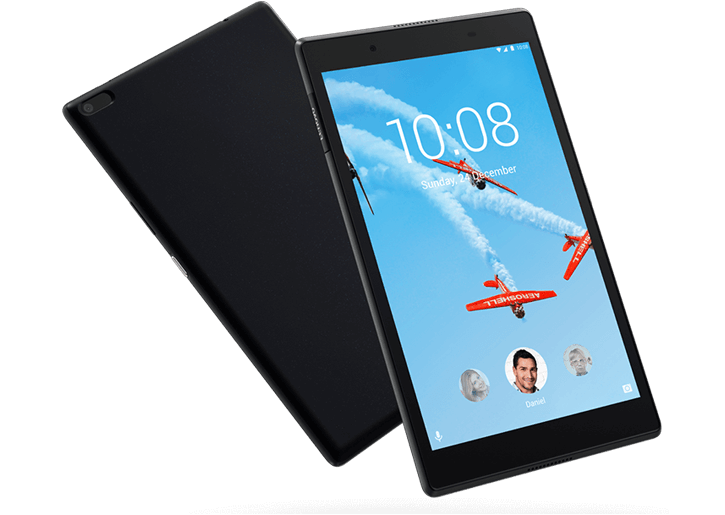
For the original German article, see here.
Dubbing an 8-inch tablet “family friendly” is a fairly straightforward process. After all, its small size means it is much better suited for small kids’ hands than larger tablets are. However, Lenovo’s attempts to make this the ultimate family tablet don’t end there, and thanks to optional accessories the tablet can be rendered virtually resistant to drops. The Wi-Fi model starts at around $130; the LTE model should cost around $20 more but is currently not yet available in the US.
If you’re not interested in spending extra money on additional accessories you get what you would expect in this class: an HD screen, 2 GB of RAM, and somewhat decent cameras. The question is whether or not the Tab 4 8 has that one killer feature that makes it all worthwhile or whether it simply turns out to be a solid and adequate workhorse.
For the sake of comparability we’ve chosen the following competitors for this review: Amazon Fire HD 8, Asus ZenPad 8.0, Huawei MediaPad M3 8.4, and the larger sibling device, the Lenovo Tab 4 10.
Case
The tablet’s lineage is clearly visible in its design language. The plain and simple case - available in black and white - with chamfered edges on both sides is far from fancy yet classy and ergonomic. Its rear side is roughened for better grip, and the rear-facing camera sits flush with the case and is therefore well protected. Torsional forces and pressure have immediate effects on the screen, and the infamous ripple effect rears its ugly head. At least the creaking remains fairly quiet overall.
Connectivity
As mentioned in the introduction, the Lenovo Tab 4 8’s features are standard for its class and price range of roughly $130: 2 GB of RAM and 16 GB of storage space, a MicroUSB port with support for USB-OTG, and support for MicroSD cards that can be formatted as internal or external storage yet are unable to take apps.
Software
Android 7.1.1 is fairly recent but the tablet’s patch level was dated June 2017 and therefore outdated. Lenovo hasn’t issued any statements regarding future updates but given the tablet’s price point we wouldn’t expect too much.
As is not uncommon for Lenovo tablets, the version of Android installed on the tablet is quite pure and clean with only a few extra applications. In order to save licensing costs some Microsoft apps can be found preloaded on the device in addition to Lenovo’s own SHAREit and SYNCit apps for - you’ve guessed it - sharing and synching your data with the cloud. In addition, an app showcasing the tablet and its features comes preloaded as well.
Lenovo allows for multiple user accounts on the tablet, meaning that it supports separate restricted accounts for children.
Communication and GPS
The Wi-Fi model that we’ve had in review supports 802.11 b/g/n Wi-Fi and is therefore incapable of connecting to Wi-Fi networks in the lesser-used 5 GHz spectrum. It also lacks support for fast ac Wi-Fi networks and was slower overall than the already somewhat sluggish Lenovo Tab 4 10. The Amazon Fire HD 8 had much faster Wi-Fi communication modules as well. Close to the router with full signal strength pages loaded pretty slowly already, and at a distance of 10 meters with three walls in-between and 75% signal strength, it got noticeably slower.
| Networking | |
| iperf3 transmit AX12 | |
| Huawei MediaPad M3 8.4 inch | |
| Amazon Fire HD 8 2017 | |
| Lenovo Tab 4 10 | |
| Lenovo Tab 4 8 | |
| iperf3 receive AX12 | |
| Huawei MediaPad M3 8.4 inch | |
| Amazon Fire HD 8 2017 | |
| Lenovo Tab 4 10 | |
| Lenovo Tab 4 8 | |
The integrated GPS module is incapable of indoor positioning, and obtaining GPS lock outdoors took a very long time. The GPS accuracy of 6 m was decent.
When compared to the professional Garmin Edge 500 GPS on our bike tour the Lenovo Tab 4 8’s GPS track turned out slightly shorter than the Garmin’s. However, the difference was only around 50 m, and overall tracking accuracy was decent. Despite the noticeable difference when compared to the Garmin Edge the tablet is suitable for GPS navigation.
Cameras
Both cameras are exactly what we would have expected them to be at this price point: a 5 MP rear-facing main shooter and a 2 MP front-facing camera. When compared to tablets, similarly priced smartphones tend to have much higher-quality cameras. For example, the Tab 4 8 lacks an LED flash and just like on the bigger Tab 4 10 photos taken with the front-facing camera tend to be overexposed and noticeably blurry. Color representation is on the cooler side but still okay overall, and the front-facing camera is decent enough for video chats.
The tablet’s main rear-facing camera fared much better in comparison. Photos turned out somewhat decent even in low-light conditions and color representation was okay. Unfortunately, large uniform areas suffer from pixelation and the photos were slightly blurry to boot. Videos are recorded in 1080p. Overall recording quality was quite good and the camera system adjusted very smoothly and quickly to changing lighting conditions.
When tested in our lab under normalized conditions, the resulting photos turned out too dark and too blurry. It suffered from the same faults that we had already noticed outdoors: pixelated unicolor areas. At least color representation was decent here as well but the Lenovo Tab 4 8’s camera is only good enough for quick snaps. If you require a better camera you are better off with a smartphone.
Accessories and Warranty
The Tab 4 8 comes with a charger and a USB cable included in the box. The optional accessories that we have already taken a closer look at during our Lenovo Tab 4 10 and Tab 4 10 Plus reviews are noteworthy, though. In short, these accessories make the tablet much safer and better protected around children. In addition, an intelligent speaker with support for Amazon’s Alexa has been announced as well, but it is unclear at this point whether or not it will support the Tab 4 8. Like the productivity package with Bluetooth keyboard it might only support the more expensive 10-inch model. Nevertheless, it is worthy of praise that Lenovo is making optional accessories enhancing the cheap base model in the first place.
Input Devices & Handling
Lenovo’s choice of keyboard is TouchPal. Unfortunately (and, we might add, quite disturbingly) the full-featured version of this preloaded keyboard app is ad-supported, and the ads can be disabled by purchasing the premium version. Basically, Lenovo is preloading the free ad-supported version from the Google Play Store by default. Either way, the keyboard works very well, is easy to use, offers plenty of additional features over the stock keyboard, and it can easily be replaced by a different keyboard app from the Play Store.
The device’s touchscreen is very sensitive, quick to react, and it is overall quite nice to use. While it doesn’t support gestures it does light up on incoming notifications. The three Android software buttons are located at the bottom of the touchscreen, and the only physical buttons are located on the right side of the case. The easily palpable rippled power/standby button sits flush with the case and is well protected from accidental triggering. The volume rocker offers very clear and distinct feedback and is easy to use as well.
Display
The 16:10 1280x800 pixel display is fairly common for tablets in the Tab 4 8’s price range. Higher-resolution displays can usually only be found in more expensive tablets. At 446 nits on average it is very bright, especially when compared with similarly priced competitors. Brightness distribution was very even, which means that large areas turn out very homogenous overall.
| |||||||||||||||||||||||||
Brightness Distribution: 91 %
Center on Battery: 455 cd/m²
Contrast: 892:1 (Black: 0.51 cd/m²)
ΔE Color 5.5 | 0.5-29.43 Ø5
ΔE Greyscale 5.5 | 0.57-98 Ø5.3
80.4% sRGB (Calman 2D)
Gamma: 2.23
| Lenovo Tab 4 8 IPS, 1280x800, 8.00 | Amazon Fire HD 8 2017 IPS, 1280x800, 8.00 | Asus ZenPad 8.0 Z380M-6B026A IPS, 1280x800, 8.00 | Huawei MediaPad M3 8.4 inch IPS, 2560x1600, 8.40 | Lenovo Tab 4 10 IPS, 1280x800, 10.10 | |
|---|---|---|---|---|---|
| Screen | -13% | 5% | 3% | 15% | |
| Brightness middle | 455 | 419 -8% | 363 -20% | 460 1% | 316 -31% |
| Brightness | 446 | 412 -8% | 348 -22% | 445 0% | 305 -32% |
| Brightness Distribution | 91 | 91 0% | 90 -1% | 90 -1% | 86 -5% |
| Black Level * | 0.51 | 0.39 24% | 0.26 49% | 0.45 12% | 0.2 61% |
| Contrast | 892 | 1074 20% | 1396 57% | 1022 15% | 1580 77% |
| Colorchecker dE 2000 * | 5.5 | 8.5 -55% | 5.8 -5% | 6.2 -13% | 5 9% |
| Colorchecker dE 2000 max. * | 14.8 | 13.8 7% | 17.8 -20% | 10.5 29% | 8.7 41% |
| Greyscale dE 2000 * | 5.5 | 10.3 -87% | 5.5 -0% | 6.5 -18% | 5.7 -4% |
| Gamma | 2.23 99% | 2.6 85% | 2.24 98% | 2.33 94% | 2.25 98% |
| CCT | 7852 83% | 6216 105% | 7388 88% | 8056 81% | 7921 82% |
* ... smaller is better
Screen Flickering / PWM (Pulse-Width Modulation)
| Screen flickering / PWM not detected | |||
In comparison: 53 % of all tested devices do not use PWM to dim the display. If PWM was detected, an average of 17924 (minimum: 5 - maximum: 3846000) Hz was measured. | |||
Unfortunately, the display falls short when it comes to black value and contrast ratio: 0.51 nits result in a contrast ratio of only 891:1 - not too bad but also nothing to be proud of. In our test group, the Tab 4 8 had the lowest contrast ratio of the bunch. Consequently, colors don’t pop and dark areas are more grayish than black. At least the display doesn’t flicker at low brightness levels.
When measured with a spectrophotometer and the CalMAN software, we found a very noticeable blue tint. Apart from that, color representation was pretty accurate. sRGB color-space coverage was only at 80.4%, and the display is thus not suited for professional color assessment.
Display Response Times
| ↔ Response Time Black to White | ||
|---|---|---|
| 32 ms ... rise ↗ and fall ↘ combined | ↗ 17 ms rise | |
| ↘ 15 ms fall | ||
| The screen shows slow response rates in our tests and will be unsatisfactory for gamers. In comparison, all tested devices range from 0.1 (minimum) to 240 (maximum) ms. » 84 % of all devices are better. This means that the measured response time is worse than the average of all tested devices (21.5 ms). | ||
| ↔ Response Time 50% Grey to 80% Grey | ||
| 46 ms ... rise ↗ and fall ↘ combined | ↗ 25 ms rise | |
| ↘ 21 ms fall | ||
| The screen shows slow response rates in our tests and will be unsatisfactory for gamers. In comparison, all tested devices range from 0.2 (minimum) to 636 (maximum) ms. » 76 % of all devices are better. This means that the measured response time is worse than the average of all tested devices (33.7 ms). | ||
Thanks to its high brightness, the tablet is easily usable outdoors. However, its lack of ambient light sensor means that brightness has to be adjusted manually at all times. Outdoors, the highest setting should work just fine. As is quite common for smartphones and tablets, the display is highly reflective. Bright light sources directly behind the user should thus be avoided.
Viewing angles were very good, and we found no traces of distortion even at acute angles.
Performance
Like the Tab 4 10, the Lenovo Tab 4 8 is equipped with a Qualcomm Snapdragon 425 with four cores and a clock speed of 1.4 GHz. As expected, our review unit performed just as fast as other similarly equipped tablets, including the aforementioned Tab 4 10. In other words: It is powerful enough for smooth overall operation and most apps.
The CPU is accompanied by a Qualcomm Adreno 308 GPU with six cores. Again, the unit performed as expected and similar to other equally equipped tablets, and as expected it is not really made for gaming.
| AnTuTu v6 - Total Score | |
| Huawei MediaPad M3 8.4 inch | |
| Lenovo Tab 4 8 | |
| Lenovo Tab 4 10 | |
| Asus ZenPad 8.0 Z380M-6B026A | |
| Amazon Fire HD 8 2017 | |
| PCMark for Android | |
| Work performance score | |
| Huawei MediaPad M3 8.4 inch | |
| Lenovo Tab 4 10 | |
| Asus ZenPad 8.0 Z380M-6B026A | |
| Lenovo Tab 4 8 | |
| Amazon Fire HD 8 2017 | |
| Work 2.0 performance score | |
| Lenovo Tab 4 8 | |
| Lenovo Tab 4 10 | |
| Amazon Fire HD 8 2017 | |
| Geekbench 4.4 | |
| 64 Bit Single-Core Score | |
| Lenovo Tab 4 8 | |
| Lenovo Tab 4 10 | |
| Amazon Fire HD 8 2017 | |
| 64 Bit Multi-Core Score | |
| Lenovo Tab 4 8 | |
| Lenovo Tab 4 10 | |
| Amazon Fire HD 8 2017 | |
| Compute RenderScript Score | |
| Lenovo Tab 4 10 | |
| Lenovo Tab 4 8 | |
| GFXBench (DX / GLBenchmark) 2.7 | |
| T-Rex Onscreen | |
| Huawei MediaPad M3 8.4 inch | |
| Asus ZenPad 8.0 Z380M-6B026A | |
| Amazon Fire HD 8 2017 | |
| Lenovo Tab 4 8 | |
| Lenovo Tab 4 10 | |
| 1920x1080 T-Rex Offscreen | |
| Huawei MediaPad M3 8.4 inch | |
| Asus ZenPad 8.0 Z380M-6B026A | |
| Amazon Fire HD 8 2017 | |
| Lenovo Tab 4 8 | |
| Lenovo Tab 4 10 | |
| GFXBench 3.0 | |
| on screen Manhattan Onscreen OGL | |
| Huawei MediaPad M3 8.4 inch | |
| Asus ZenPad 8.0 Z380M-6B026A | |
| Amazon Fire HD 8 2017 | |
| Lenovo Tab 4 8 | |
| Lenovo Tab 4 10 | |
| 1920x1080 1080p Manhattan Offscreen | |
| Huawei MediaPad M3 8.4 inch | |
| Asus ZenPad 8.0 Z380M-6B026A | |
| Amazon Fire HD 8 2017 | |
| Lenovo Tab 4 8 | |
| Lenovo Tab 4 10 | |
When browsing the web, the Tab 4 8 fared decently well and scored somewhere in the midfield. Website-loading times were not particularly fast and complex HTML5 sites can turn into a major problem.
| Octane V2 - Total Score | |
| Huawei MediaPad M3 8.4 inch (Chrome 54) | |
| Lenovo Tab 4 10 (Chrome 60) | |
| Lenovo Tab 4 8 (Chrome 61) | |
| Amazon Fire HD 8 2017 (Amazon Silk 58.2.3029.83.10) | |
| Asus ZenPad 8.0 Z380M-6B026A (Chrome 52.0.2743.91) | |
| WebXPRT 2015 - Overall | |
| Huawei MediaPad M3 8.4 inch (Chrome 54) | |
| Lenovo Tab 4 8 (Chrome 61) | |
| Lenovo Tab 4 10 (Chrome 60) | |
| Asus ZenPad 8.0 Z380M-6B026A (Chrome 52.0.2743.91) | |
| Amazon Fire HD 8 2017 (Amazon Silk 58.2.3029.83.10) | |
| JetStream 1.1 - Total Score | |
| Huawei MediaPad M3 8.4 inch (Chrome 54) | |
| Amazon Fire HD 8 2017 (Amazon Silk 58.2.3029.83.10) | |
| Asus ZenPad 8.0 Z380M-6B026A (Chrome 52.0.2743.91) | |
| Lenovo Tab 4 8 (Chrome 61) | |
| Mozilla Kraken 1.1 - Total | |
| Lenovo Tab 4 10 (Chrome 60) | |
| Asus ZenPad 8.0 Z380M-6B026A (Chrome 52.0.2743.91) | |
| Lenovo Tab 4 8 (Chrome 61) | |
| Amazon Fire HD 8 2017 (Amazon Silk 58.2.3029.83.10) | |
| Huawei MediaPad M3 8.4 inch (Chrome 54) | |
* ... smaller is better
Storage performance was top-notch for its class. Like the Tab 4 10, it accessed our Toshiba Exceria Pro M501 reference card much faster than the entire competition, and accessing the internal storage was reasonably fast as well. Only the more expensive Huawei MediaPad M3 offered a more continuous and consistent read and write performance.
| Lenovo Tab 4 8 | Amazon Fire HD 8 2017 | Asus ZenPad 8.0 Z380M-6B026A | Huawei MediaPad M3 8.4 inch | Lenovo Tab 4 10 | |
|---|---|---|---|---|---|
| AndroBench 3-5 | -25% | -38% | 47% | -6% | |
| Sequential Read 256KB | 265.1 | 159.1 -40% | 158.4 -40% | 249.7 -6% | 275 4% |
| Sequential Write 256KB | 72.3 | 47.23 -35% | 45.71 -37% | 117.2 62% | 45.3 -37% |
| Random Read 4KB | 44 | 21.55 -51% | 21.96 -50% | 32.04 -27% | 32.3 -27% |
| Random Write 4KB | 7.1 | 11.51 62% | 8.35 18% | 31.35 342% | 8.9 25% |
| Sequential Read 256KB SDCard | 84.8 | 51.1 -40% | 35.2 -58% | 61.7 ? -27% | 84.5 0% |
| Sequential Write 256KB SDCard | 61.1 | 34.15 -44% | 24.9 -59% | 23.52 ? -62% | 59.9 -2% |
Games
Gaming isn’t really the Tab 4 8’s strong point and requires some compromises here and there. For example, complex games such as Asphalt 8 require significantly reduced details to run smoothly while Dead Trigger 2 runs just fine at 30 FPS. Casual games, such as Angry Birds, are no problem at all.
The touchscreen and gyroscope worked very well and were reliable while gaming.
| Asphalt 8: Airborne | |||
| Settings | Value | ||
| high | 18 fps | ||
| very low | 30 fps | ||
| Dead Trigger 2 | |||
| Settings | Value | ||
| high | 30 fps | ||
Emissions
Temperature
Given that frame rates during GFXBench’s battery test remained fairly consistent, even after 30 iterations, it is safe to assume that the Tab 4 8 is capable of delivering peak performance over prolonged periods of high load.
The case’s maximum surface temperature was 40.1 °C at the back - noticeable but not yet alarmingly high. When idle, the maximum surface temperature was measured at 33.3 °C and thus imperceptible.
(+) The maximum temperature on the upper side is 38.5 °C / 101 F, compared to the average of 33.8 °C / 93 F, ranging from 20.7 to 53.2 °C for the class Tablet.
(±) The bottom heats up to a maximum of 40.1 °C / 104 F, compared to the average of 33.3 °C / 92 F
(+) In idle usage, the average temperature for the upper side is 30.9 °C / 88 F, compared to the device average of 30 °C / 86 F.
Speakers
The preloaded Dolby Atmos app includes various sound profiles for the two front-facing speakers as well as a manual equalizer should you require additional adjustments. The differences between the available profiles are enormous, and the “music” mode allowed for a very nice listening experience for a tablet at this price point. The Asus ZenPad 8 was unable to keep up with the Tab 4 8, and the latter offered much more pronounced low mids with no bass whatsoever. At 84.8 dB(A), the speakers get reasonably loud and don’t suffer from distortion at maximum volume either.
A 3.5 mm headphone jack and Bluetooth can be used for connecting external speakers and headphones to improve the device’s soundscape even further. Both options worked without a hitch and emitted a very clear sound.
Lenovo Tab 4 8 audio analysis
(+) | speakers can play relatively loud (84.8 dB)
Bass 100 - 315 Hz
(-) | nearly no bass - on average 18.8% lower than median
(±) | linearity of bass is average (8.5% delta to prev. frequency)
Mids 400 - 2000 Hz
(±) | higher mids - on average 7.9% higher than median
(±) | linearity of mids is average (7.3% delta to prev. frequency)
Highs 2 - 16 kHz
(±) | higher highs - on average 5.7% higher than median
(+) | highs are linear (5.8% delta to prev. frequency)
Overall 100 - 16.000 Hz
(±) | linearity of overall sound is average (24% difference to median)
Compared to same class
» 68% of all tested devices in this class were better, 7% similar, 25% worse
» The best had a delta of 7%, average was 23%, worst was 129%
Compared to all devices tested
» 68% of all tested devices were better, 7% similar, 25% worse
» The best had a delta of 4%, average was 25%, worst was 134%
Asus ZenPad 8.0 Z380M-6B026A audio analysis
(±) | speaker loudness is average but good (75.1 dB)
Bass 100 - 315 Hz
(-) | nearly no bass - on average 28.5% lower than median
(-) | bass is not linear (18.8% delta to prev. frequency)
Mids 400 - 2000 Hz
(+) | balanced mids - only 3.9% away from median
(±) | linearity of mids is average (9.3% delta to prev. frequency)
Highs 2 - 16 kHz
(+) | balanced highs - only 2.5% away from median
(+) | highs are linear (5.4% delta to prev. frequency)
Overall 100 - 16.000 Hz
(±) | linearity of overall sound is average (23.9% difference to median)
Compared to same class
» 67% of all tested devices in this class were better, 7% similar, 25% worse
» The best had a delta of 7%, average was 23%, worst was 129%
Compared to all devices tested
» 67% of all tested devices were better, 7% similar, 26% worse
» The best had a delta of 4%, average was 25%, worst was 134%
Frequency diagram in comparison (checkboxes are selectable!)
Energy Management
Power Consumption
Overall power consumption was lower than with the Tab 4 10 but above average for its class, especially when idle. The Tab 4 8’s maximum power consumption under load was measured at 6.13 W. While the Huawei MediaPad M3 drew significantly more energy, it also offered much more than the Tab 4 8.
When the device was turned off we were still able to detect a trickle, and leaving the tablet turned off for several weeks without charging in between will result in partial or total discharge. At least power consumption in standby was reasonable.
| Off / Standby | |
| Idle | |
| Load |
|
| Lenovo Tab 4 8 4850 mAh | Amazon Fire HD 8 2017 mAh | Asus ZenPad 8.0 Z380M-6B026A 4000 mAh | Huawei MediaPad M3 8.4 inch 5100 mAh | Lenovo Tab 4 10 7000 mAh | |
|---|---|---|---|---|---|
| Power Consumption | 16% | 13% | -24% | -3% | |
| Idle Minimum * | 1.1 | 0.99 10% | 1.32 -20% | 1.51 -37% | 1.09 1% |
| Idle Average * | 3.51 | 2.74 22% | 2.71 23% | 3.64 -4% | 3.71 -6% |
| Idle Maximum * | 4.14 | 2.83 32% | 2.83 32% | 3.68 11% | 3.84 7% |
| Load Average * | 4.86 | 4.51 7% | 4.24 13% | 6.95 -43% | 5.07 -4% |
| Load Maximum * | 6.13 | 5.69 7% | 5.01 18% | 9.11 -49% | 6.88 -12% |
* ... smaller is better
Battery Life
The battery life of the Tab 4 10 was much better than that of the Tab 4 8 thanks to its higher-capacity battery. Our review unit came equipped with a 4,850 mAh battery while the Tab 4 10 featured a 7,000 mAh battery. Even though the battery was fairly large when compared to its competitors this did not result in longer battery life. The Tab 4 8’s 7:32 hours in our Wi-Fi test was beaten by the entire competition, and the Amazon Fire HD 8 did exceptionally well in this test in particular. Overall battery life was as expected of a device in this price range, but given the high-capacity battery we would have loved to see more.
Charging from near empty to 100% with the included charger takes more than 2 hours.
| Lenovo Tab 4 8 4850 mAh | Amazon Fire HD 8 2017 mAh | Asus ZenPad 8.0 Z380M-6B026A 4000 mAh | Huawei MediaPad M3 8.4 inch 5100 mAh | Lenovo Tab 4 10 7000 mAh | |
|---|---|---|---|---|---|
| Battery Runtime | 51% | 5% | 2% | 40% | |
| Reader / Idle | 1207 | 2032 68% | 1305 8% | 1110 -8% | |
| H.264 | 603 | 744 23% | 624 3% | 583 -3% | |
| WiFi v1.3 | 452 | 770 70% | 472 4% | 546 21% | 632 40% |
| Load | 276 | 393 42% | 287 4% | 268 -3% |
Pros
Cons
Verdict
Lenovo’s Tab 4 8 is an affordable tablet that fails to stand out. Its design is rather restrained and conservative, the case is susceptible to torsional forces and pressure, and camera resolution, image quality, performance, and connectivity are typical for its class.
In other words: Lenovo’s tablet is not special in any way but at the same time is solid in many ways. The bright display’s viewing angles are superb, the GPS is accurate, and the device doesn’t get very hot under load. Its front-facing speakers, its pure version of Android, and its large battery (despite which Lenovo has failed to squeeze out extra battery life), are particularly noteworthy. It can be made childproof with optional accessories, and we would once again like to emphasize the fact that unlike other manufacturers, Lenovo has actually spent time, money, and energy thinking about how to improve a cheap tablet with optional accessories.
The Lenovo Tab 4 8 is a solid 8-inch tablet without any bells and whistles but has a solid overall performance.
Overall, tablets such as Lenovo’s Yoga-series are much more innovative than the Tab 4 8. However, the latter offers solid performance with no real flaws at a decent price.
Lenovo Tab 4 8
-
10/06/2017 v6(old)
Florian Wimmer


 Deutsch
Deutsch English
English Español
Español Français
Français Italiano
Italiano Nederlands
Nederlands Polski
Polski Português
Português Русский
Русский Türkçe
Türkçe Svenska
Svenska Chinese
Chinese Magyar
Magyar